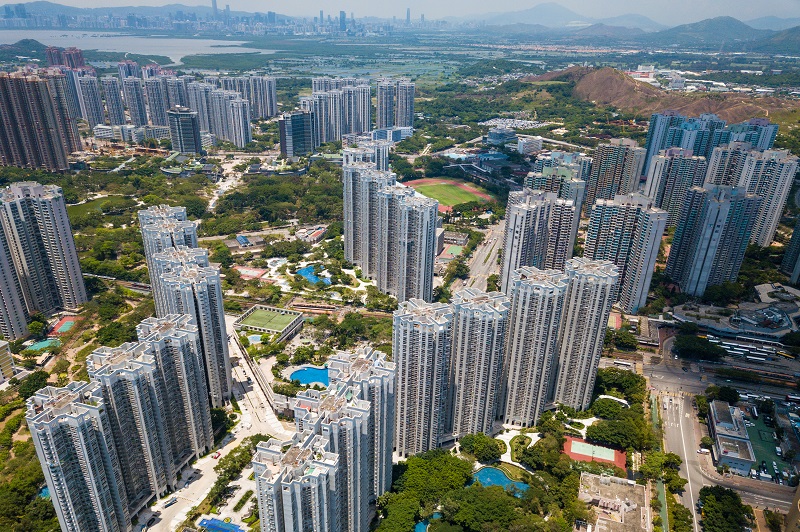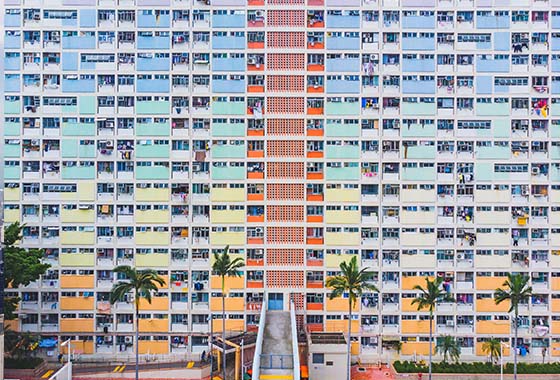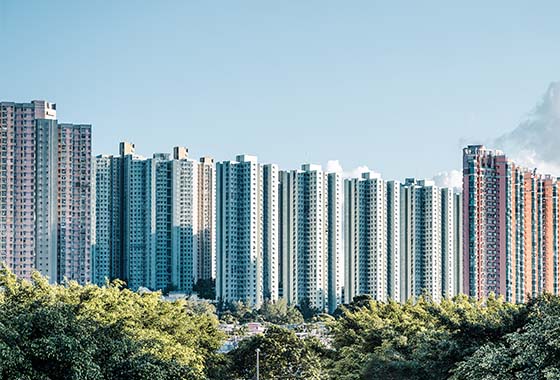Budget overlooks housing supply shortage
Authors: Ryan Ip Man-ki, Head of Land and Housing Research, and Jacqueline Hui, Assistant Researcher in Our Hong Kong Foundation.

Government plan and figures suggest Hong Kong’s housing and land supply will be further squeezed with problems in every segment of the supply chain.
The short-term policy measures in the latest Budget have helped many individuals and companies hit by the Covid-19 epidemic, but it has come up short in a number of areas, notably in housing and land supply. Financial Secretary Paul Chan Mo-po’s annual government financial plan told us that the various medium- and long-term mechanisms the government uses to find land are unsatisfactory and often delayed, confirming the common perception that the administration is struggling to deal with the housing problem. Just as the shortage in public housing supply continues, supply for the private sector is also worsening, indicating the government is unable to provide spade-ready land in a timely manner. As an everyday analogy, we have a shortage of “bread” (housing), the supply of “flour” (spade-ready land) is drying up, and the “bread making machine”(the government’s land developing mechanism for providing spade-ready sites) is malfunctioning, all at the same time.
Public and private housing supply both under threat
Since the government announced its housing supply targets in its Long Term Housing Strategy (LTHS), public housing completions have never met supply targets. The official forecast for the number of completed units for the 2020-2024 five-year period is only 20,400 units, which is 30 per cent less than the supply target of 30,100 units. As for private flats, while the number of expected completed units in the coming five years will be increased to 19,600, the reality suggests such optimism is likely to be misplaced.
Last year, the government forecasted the completion of 20,415 private units, but ended up witnessing the completion of just 13,643 units. Since 2010, the government has over-estimated the number of completed private units by an average of 9 per cent every year. There are early warning signs of further deteriorating supply as well. Spade-ready land supply, construction commencement and presale consents all recorded drastic reductions from past 1-2 years’ peak levels. These challenges suggest the number of completed private flats in the next five years has been grossly overestimated.
Further up the production chain, alarm bells are ringing in the supply of developable land. The government forecasts that its Land Sale Programme for the new financial year will bring about some 15,700 units, but how achievable is this? For the same period last year, the government expected that 15,500 units could be built on its supply of spade-ready land, but so far the supply is only 12,190 units. In fact, during the period 2013/2014 to 2019/2020, the actual supply of spade-ready land each year was on average 30 per cent less than government forecasts. If the pattern is repeated, the actual supply of spade-ready land will only produce 11,050 units, less than the 12,900 units forecast by LTHS.
Government-related land supply, including land sale, redevelopment and railway projects, sees no sign of rebound as well. Since the several years of increase prior to 2015/2016, government-related annual land supply has been declining, hovering around the 10,000-unit mark since 2016/2017. From government land sale last year, the number of buildable units was the lowest in ten years, raising questions as to whether the government’s land development mechanism is functioning properly.
Hiccups everywhere
With the “bread making machine” not delivering the goods, short-term land supply relies heavily on rezoning. The Budget notes there have been 135 plots of rezoned land in the past six years, averaging more than 20 plots per year. However, Town Planning Board documents and other public information show only three plots of land were rezoned in the past year, suggesting the process has slowed down drastically. As the government’s policy is to act on easier options first when rezoning, it seems that they have exhausted the easy options, and rezoning will be met with more difficulties in future.
Even worse, the first intakes for new towns and new development areas, which are intended to be major housing supply in medium and long term, have been repeatedly delayed. For example, public housing projects in Kwu Tung North and Fanling South were supposed to be completed in 2026, the revised official phrasing is that the first intake will now be in 2027. First intakes of public housing residents in Yuen Long South and Tung Chung East are also delayed when compared to previous official documents.
Long-term vision needed
With housing and land supply in Hong Kong facing various bottlenecks, the need for long-term land planning is crucial. The government has rightly revised its land demand forecast and built land reserves, while providing a blueprint for the city’s long-term plans. We hope the new forecasts will reflect the community’s real land needs, which is closer to our long-term forecast of 9,000 hectares. We also welcome the government’s pledge to start the research as well as the engineering, planning and financial assessments for the Lantau Tomorrow Vision project as soon as possible. We hope there will be more insightful data available and more engagement with the public, which will be helpful in building consensus on resolving Hong Kong’s housing and land shortage problem.



